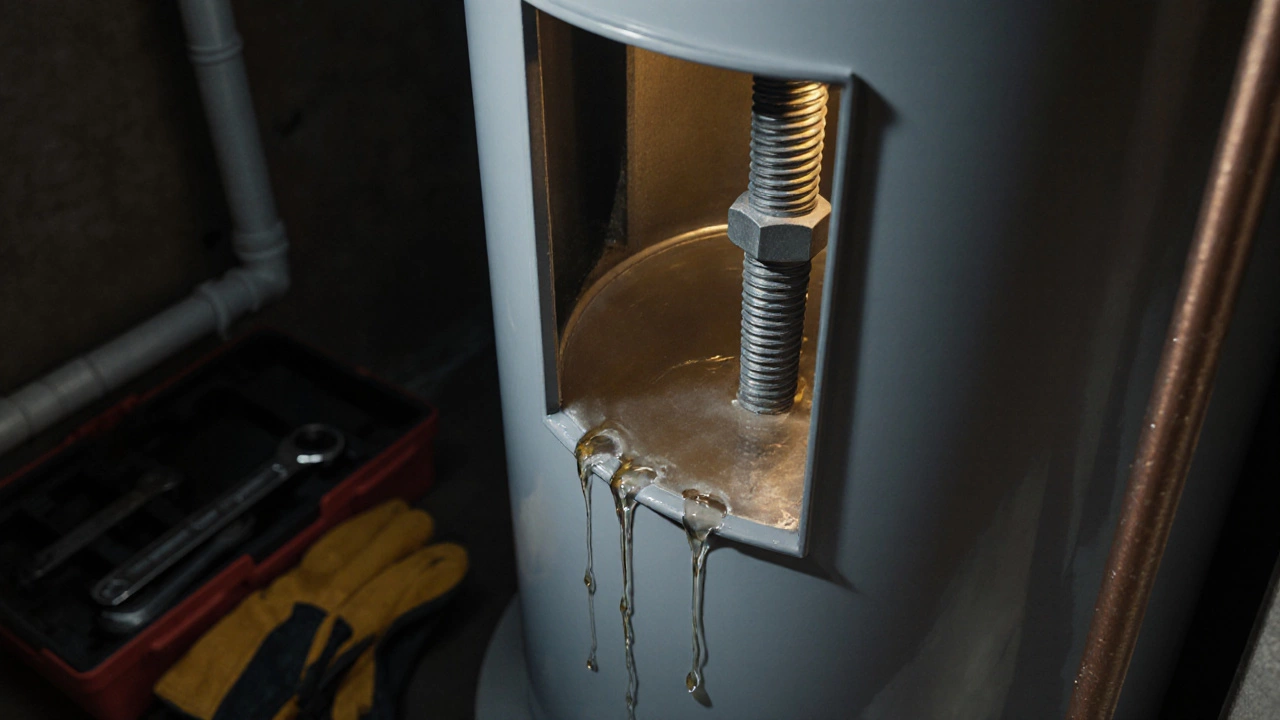When dealing with corrosion, the gradual breakdown of metal caused by chemical reactions, often involving water and oxygen. Also known as rusting, it can turn a perfectly good washer, fridge, or boiler into a costly replacement. Understanding corrosion helps you spot early signs, avoid surprise breakdowns, and keep your appliances humming longer.
The main culprit behind most appliance failures is rust, a visible form of iron oxide that appears when iron or steel reacts with moisture and air. But rust is just one face of metal degradation, which also includes pitting, galvanic corrosion, and stress corrosion cracking. These processes speed up in humid kitchens or damp laundry rooms, where electrolytes from detergent residue or hard water act as conductors. A simple rule: corrosion thrives where metal meets moisture, oxygen, and an electrolyte.
To slow the attack, many manufacturers apply a protective coating, such as powder paint, enamel, or corrosion‑resistant alloys. The coating acts as a barrier, stopping water and salts from touching the bare metal. When the coating cracks or wears away, the underlying metal is exposed and the decay accelerates. That’s why regular inspection of seams, gaskets, and painted surfaces is a cornerstone of preventive maintenance. A quick visual check, followed by a gentle clean‑up, can catch flaking paint or built‑up grime before it becomes a full‑blown failure.
Corrosion doesn’t just look ugly—it cuts the appliance lifespan. A fridge with a corroded evaporator coil loses cooling efficiency, a washing machine with rusted drum bearings makes louder noises, and a boiler with pitted heat‑exchanger tubes can overheat or leak. The financial impact adds up: emergency repair calls, higher energy bills, and eventually, premature replacement. By tackling corrosion early, you keep your equipment running at peak performance and save money.
Practical steps are easier than you think. First, keep the area around appliances dry; use a de‑humidifier in basements or washrooms. Second, wipe away spills and detergent residues promptly—those salts are electrolytes that boost corrosion rates. Third, run a short maintenance cycle on dishwashers and washing machines with a vinegar rinse to dissolve mineral deposits. Fourth, inspect metal fasteners and replace any that show rust or brittleness. Finally, consider a professional coating touch‑up for older units, especially around heat sources where temperatures swing wildly.
Now that you know why corrosion happens, what it looks like, and how to halt it, you’ll recognize the warning signs before they turn into costly breakdowns. Below you’ll find a hand‑picked collection of guides that dive deeper into specific appliances—freezers, boilers, water heaters, and more—showing you exactly how to diagnose corrosion‑related faults, perform quick fixes, and decide when a pro is needed. Let’s get your home running smoother, longer, and with fewer nasty surprises.
Posted by
Orin Trask
0 Comments

Learn how to spot a failing anode rod, inspect it safely, interpret the signs, and replace it to protect your water heater from corrosion.
read more